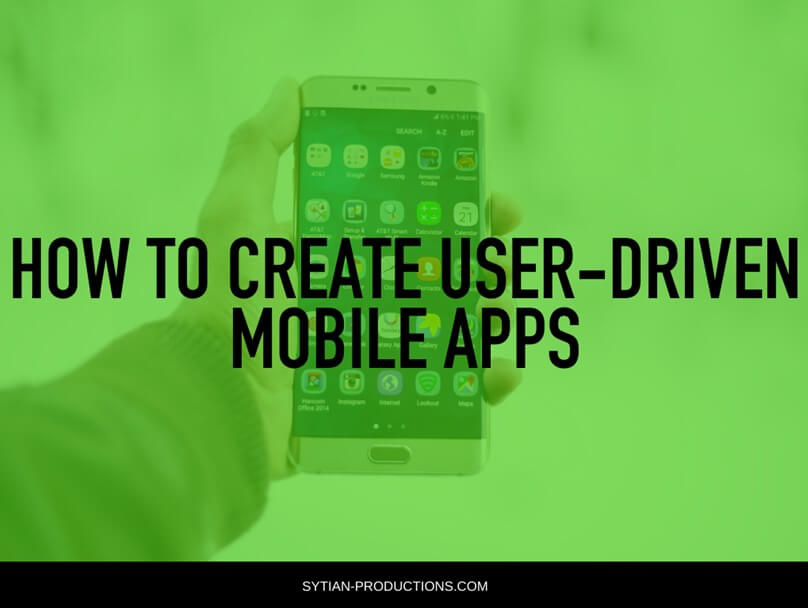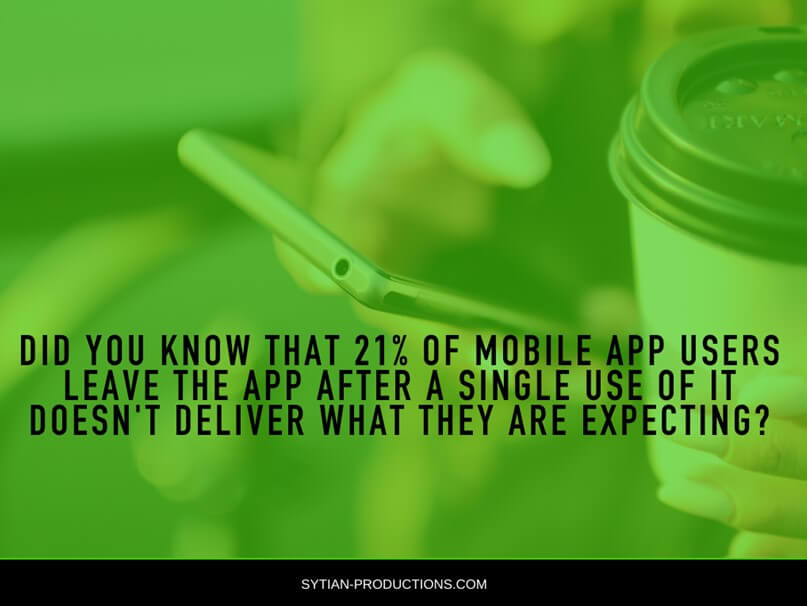How to Create User-Driven Mobile Apps
The development of mobile apps always starts and ends with the user. The quality of the user experience (UX) and if you understand your target users’ use of mobile app behavior patterns, you’ll be capable of creating a mobile product that can meet their expectations and satisfy their demands.
UX affects your user’s interaction and perception with your mobile app or product, creating a user-driven mobile app, requires user data analysis and design thinking process, through these, you can create solutions to address challenges in users’ pain points.
Let’s discuss below some ways how you can create user-driven mobile apps.

Error-Free Functionalities
Most of the time, mobile app developers overlook the functionalities of their product which can lead to a faulty one. Did you know that 21% of mobile app users leave the app after a single use of it doesn’t deliver what they are expecting? This is according to a report from Localytics.
Your mobile app’s functionality must help your user accomplish the tasks they need to be able to achieve their goals, which is the reason for downloading it in the first place.

Easy and Efficient Onboarding
The main goal of onboarding is to let the users know the value of your mobile app. This is done by demonstrating how your users can achieve what they want, fast and efficiently.
You have to keep in mind that if the user encounters problems within the first few clicks on your mobile app, they are likely to drop it and delete it from their device.
It is essential to know that providing an excellent onboarding user experience is the key to attracting and retaining loyal users. There are ways to integrate and maximize your mobile app’s user experience during the onboarding process like showing a tutorial on how the app works.
You can also reduce the number of steps your user needs to create or sign up for an account, this includes multiple registration options.
Follow Best Practices in Mobile App Development
It is important to learn from the mistakes of other mobile app developers and follow in the footsteps of those who succeed.
This is most essential when it comes to designing the mobile app. There are times when you get carried away by creativity and imagination, but on top of everything, the most important factor is the mobile app’s functionality. This means that experimenting outside an excellent-working framework is not considered a good practice that can lead your project down the drain.
It is recommended to work with a mobile app designer who clearly knows the guidelines for creating a user-driven all.
Designer User Touchpoints
You should consider some situations when your user would want to use the mobile app and set the settings accordingly. From a technical standpoint, it’ll be excellent to tinker with a mobile app’s push notifications.
Users, in general, have mixed feelings about push notifications, but that’s because there are mobile apps that have overused this feature. However, applied correctly, this feature can attract more people into your mobile app when they most need it.
Ensure Security and Trustworthiness
There are times when users download a mobile app and they get overwhelmed with a long list of permissions that need to be accepted before they can even start using the app.
Some of these so-called permissions include asking for credit card information when the app doesn’t have an eCommerce functionality integrated into it, or asking to have access to your photo gallery without the need to.
The above-mentioned directly correlates with the level of comfort and trust your users feel when they use your mobile app. This could affect your overall branding.
Therefore, it is crucial that you provide transparent permission policies to your mobile app. This lets your users control how much information they are sharing with the app.
Create Beautiful Things Users Want
As important as your mobile app’s functionality, creating beautiful features is equally important. This one factor is often tested when you launch your mobile app through the Apple Store or Google Play. Pretty-looking apps tend to get more downloads.
It’s a fact that users prefer to download beautiful apps and they spend enough time and resources on the ones that would totally pay off.
This comes true for almost all industries but especially applies to cool mobile apps that have something to do with entertaining users and social media trends.
Listen to Your Users
This is probably one of the most important factors in creating a user-driven mobile app. Technology advancement is exponential and the innovating operating systems create new possibilities for mobile app development to avoid errors.
With the constantly changing device features that require adjustment to your mobile apps, your users’ behaviors are also changing.
This only means that what worked excellently for them today may not be tomorrow. Therefore, it is essential that you read user reviews, comments, and feedback. This will help you improve your mobile app’s features and provide more satisfaction to your users.
Avoid Redirects
An excellent mobile app should consist of only the things that users need for them to solve their problems. Therefore, linking or redirecting them to an external website or pages from the app itself is a poor design practice.
If it’s not possible to include everything in your mobile app, it’s better to give them fewer options. That way, you can concentrate on perfecting your mobile app’s features and functionality which is most preferred by users.
Creating a user-driven mobile app involves numerous elements that work together to give satisfaction to your users and at the same time, meet your business goals. You may want to push for an innovative shift away from conventional design practices.
These considerations can help you develop the most ideal mobile user experience through a user-driven approach.
Now that we are living in a world that is dominated by smartphones and other digital devices, it is crucial that you take into consideration how your mobile app interacts and engages with your users too.